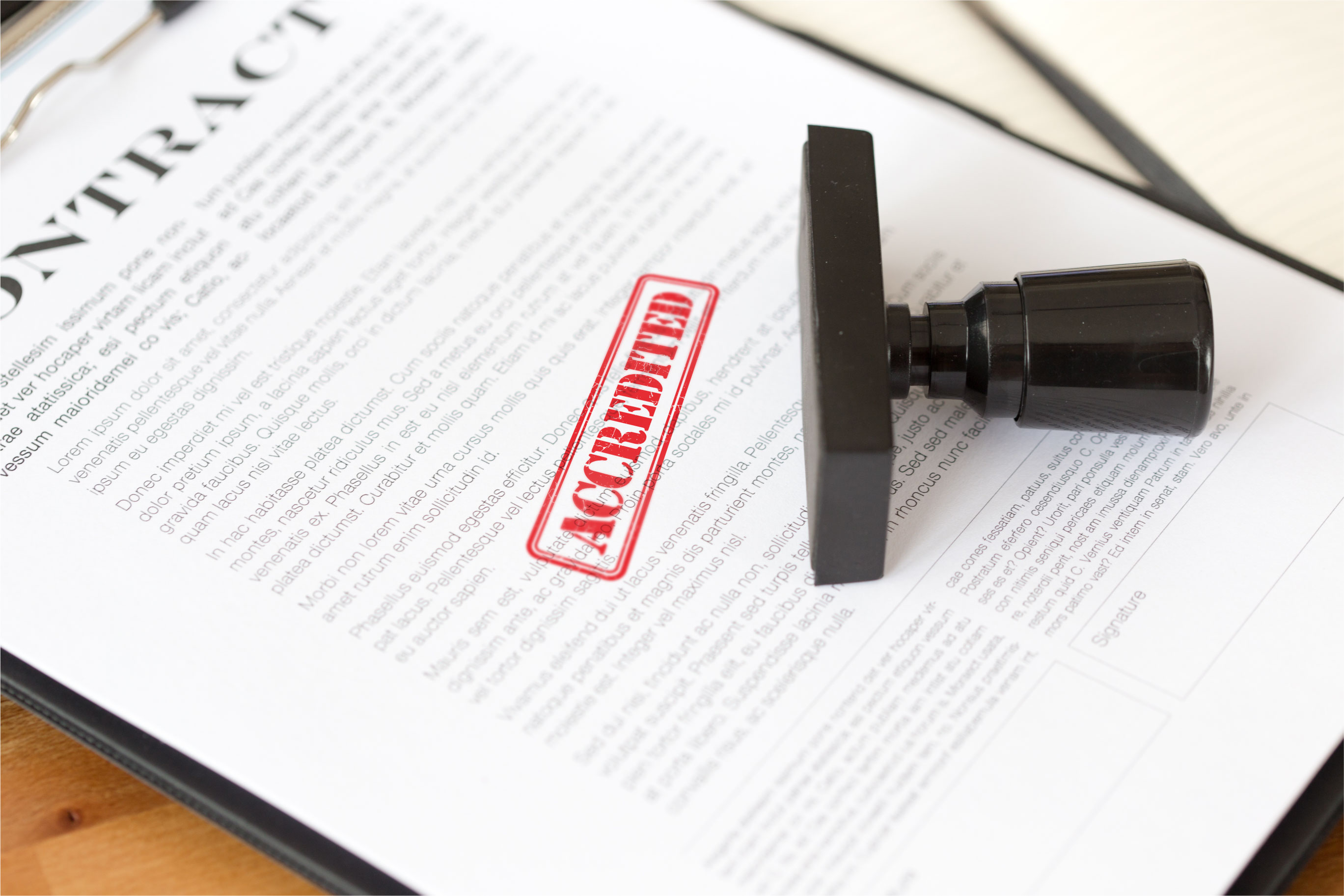
Why Accreditation?
Undergoing a AAAHC “deemed” status survey, where compliance to both Accreditation Standards and CMS Conditions for Coverage (CfCs) are assessed, is demanding for an ASC. However, there are many reasons why this is beneficial. In general, accreditation may help with consumer confidence, providing a competitive edge for your center in your market. Some states require accreditation in order to maintain licensure, and many insurers and third parties require accreditation as a prerequisite to eligibility for insurance reimbursement and for participation in managed care plans or contract bidding. In addition, being accredited may reduce liability costs.
Deemed status provides these benefits plus it qualifies as a state agency review for Medicare certification for new and existing centers. In most cases, the state will not review an ASC that has been accredited through the Medicare or AAAHC deemed status survey, but it does not preclude the state from conducting validation or complaint inspections. State licensure inspections are separate from Medicare surveys and are conducted according to state requirements.
Public Notice of AAAHC Deemed Status Survey
Prior to the start of the on-site survey, a packet of information about the upcoming, unannounced site visit is sent to the applicant ASC’s primary contact person. The packet includes a general outline of the survey event, a listing of documents surveyors may request for review, a copy of the Notice of Accreditation Survey for posting, and other survey information.
It is important that the center post the Notice of Accreditation Survey for at least 30 days prior to AAAHC’s arrival for survey. If not, the survey will still be conducted, but an accreditation decision cannot be rendered until the Notice has been posted for a period of 30 calendar days.
The Accreditation Process: The AAAHC Deemed Status Survey Team
Although an accreditation survey is, of necessity, evaluative, AAAHC emphasizes the educational and consultative benefits of accreditation. Thus, AAAHC uses health care professionals and administrators who are actively involved in ambulatory health care settings to conduct surveys.
The Accreditation Process: Surveyor Conduct
Surveyors are representatives of AAAHC. Their priority when conducting surveys is to serve as ambassadors of AAAHC, by being objective fact finders, and educators when appropriate. It is AAAHC policy and practice that surveyors do not participate in surveys of organizations that may be in direct competition with the surveyor’s business interests, or that bear any significant beneficial interest to the surveyor or the surveyor’s immediate family. AAAHC policy also states that, while serving as representatives of AAAHC, surveyors may not solicit personal business or take part in any activities that appear to be in furtherance of their personal, entrepreneurial endeavors.
The Accreditation Process: The On-Site Survey
Each survey is tailored to the type, size, and range of services offered by the ASC seeking accreditation. The length of the on-site visit and the number of surveyors sent by AAAHC are based on a careful review of the information provided in the Application for Survey and supporting documents submitted by the ASC. Questions regarding the scope of a survey should be directed to the AAAHC office prior to the survey.
At the start of the survey, the survey team conducts an orientation conference for the organization. The members of the survey team will introduce themselves, review the survey format, confirm written documentation for which they anticipate a need, and ask the organization to identify the key personnel who will provide the information and access necessary to complete the survey. This is also a time for the organization to ask questions.
The Survey Process: Preparing for Surveyors
ASCs are notified in advance to have specific documents and other information available for surveyors during the on-site visit. This allows surveyors to gather and review information with minimal disruption to the daily activities of the ASC being surveyed. Surveyors may, however, ask to see additional documents or request additional information during the on-site survey.
ASCs are asked to make a work-space available for surveyor use. This private or semi-private area is used to review polices, conduct interviews, and hold survey team meetings to discuss findings.
The Survey Process: The Tour
Survey teams conduct their tours differently; however, most will conduct the tour within one to two hours of being on site. Generally, the tour will closely follow the patient flow throughout the building.
During the tour, the surveyors will be escorted to the areas of observation, including patient check-in. During this time, surveyors will observe posted signs and evidence of quality of care.
Information intake will be next. Limited questions are asked. Surveyors may ask staff to clarify a process or a policy (i.e., ”How often do you check the refrigerator?” or “What kinds of snacks do you give to patients?”).
Watch for breaches in infection control during the times surveyors are observing staff. Stethoscopes around the neck, missed opportunities for hand hygiene, multiple bags of IV fluid pre-spiked are some examples of infection control breaches.
Generally, surveyors will look into an operating room through the windows or doors. Remember to be firm on protocol at this point. The clinical surveyor will determine when to observe a procedure. The surveyor may ask for a daily schedule to review to facilitate selection of a case or the surveyor may want to spend time with staff for casual observation.
The surveyors will then be shown recovery, post-op/PACU, and discharge. At this point, the surveyors will return to the designated survey work-space.
The Survey Process: After the Tour
After the tour is completed, the surveyors will most likely conduct a confidential discussion between themselves before they proceed with the remainder of the survey. If conducting a Medicare survey, the clinical/administrative surveyor will break off from the life safety surveyor. If you have a maintenance employee or employ a building maintenance company, it is best to have them present to assist in providing information to the surveyors, who may have questions related to facility management and maintenance. The life-safety surveyor is generally at the facility for one day; therefore, all information gathering is performed in a brief period of time.
At the conclusion of the on-site survey, the surveyors hold a formal summation conference where they present their findings to representatives of the organization for discussion and clarification. Surveyors are fact finders for AAAHC; they do not render the final accreditation decision. No information regarding the organization’s compliance with the standards or the accreditation decision is provided during the summation conference. Members of the organization’s governing body, medical staff, and administration are encouraged to take this opportunity to comment on, or rebut, the findings, as well as to express their perceptions of the survey.
After the AAAHC Deemed Status Survey
Accreditation decisions are made by the AAAHC Accreditation Committee following a thorough review of the information gathered during the survey and documented in the surveyor’s report, any other applicable supporting documents, and recommendations of surveyors and staff. All documents reflecting the opinions or deliberations of any AAAHC surveyor, staff member, committee member, or its officers or directors constitute peer review materials and are not disclosed to the organization seeking accreditation and Medicare deemed status, or to any third party.
AAAHC expects substantial compliance with the applicable AAAHC Standards requirements. Accreditation is awarded to ASCs that demonstrate compliance with the AAAHC Standards and adherence to AAAHC accreditation policies.
Compliance with each requirement is assessed through at least one of the following means:
- Documented evidence.
- Answers to detailed questions concerning implementation.
- On-site observations and interviews by surveyors.
The ASC will receive a written, comprehensive copy of the findings after the on-site survey.
AAAHC works with a third-party calling center (customer satisfaction Survey Company) to conduct an evaluation of our survey process and our surveyors. A representative from the calling center will phone the organization’s designated primary contact approximately one week after the survey to discuss the recent survey experience. Obtaining this input by telephone provides the surveyed organization and AAAHC with a streamlined, efficient means of providing and receiving feedback about the survey process. An organization’s feedback has no bearing on the accreditation decision.
Approximately ten business days after the last day of survey, the ASC will receive a formal request and instructions for completing the required Plan of Correction if deficiencies have been cited. AAAHC will provide the ASC with directions and a timeline for submission for the required Plan of Correction.
The letter of accreditation is typically received approximately 30 days after the completion of the survey.
source: Accreditation Association for Ambulatory Health Care, 2019, www.aaahc.org.
additional resource: Preparing for an ASC Accreditation Survey, 2018, www.pinnacleiii.com/preparing-for-an-asc-accreditation-survey.
Jovanna Grissom, Regional Vice President of Operations


